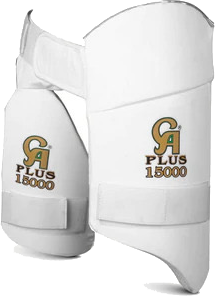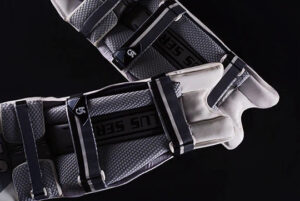Welcome to Champion Sports Cricket Kitbag Guide!
Let’s start with the basics. The cricket bat, and the cricket ball. No need for any explanation on this one! However, when it comes down to actually picking the right cricket bat, or even ball for you to use, there is much more attention to be given to that. Do read our “Choose the Perfect Size for Cricket Bats” blog in the “Blogs” section of our website to educate yourself more on this topic! Even when it comes to stocking up on cricket balls, the size and material of the ball you choose is very important too and depends on your size and intentions.
For example, for a person with a smaller build, (generally aimed at children/young teenagers) you’d definitely want to be buying only Junior Cricket balls. Trying to fit a regular sized Senior cricket ball in a child’s hand would definitely affect their grip and ability to bowl accurately and according to their plan. Furthermore, junior cricketers tend to use “Wind balls” or “Premier balls” in training and games due to their softer nature, making it more apt for the hands of younger, sensitive players to handle.
Now, for the basic protective gear. Even for the numbers 8-11 batsmen or the “Specialist Bowlers” if that’s what you like to call yourselves (just kidding ;)!), you do still need to pack a full cricket bag with all the necessary batting gear you require! The last thing you’d want as a cricketer is an injury in a place that you’d rather keep intact! So, what have we got! Let’s start from top to bottom.
1) The Helmet: The most brutal injuries in the history of cricket have, unsurprisingly, been to some region on the head. Broken and bloody noses, slashed eyelids, cut cheeks, and badly bruised temples have been all too common in the hall of fame of cricket injuries, which is why the helmet is an absolute necessity in modern day cricket.


3) The Cricket Gloves: You can tell quite intuitively why the cricket gloves are a must-have item for your cricket kit – they’re usually the closest part of your body to the cricket ball when a delivery is headed your way so if you miss your shot, it’s likely you could get hit there!
In similar fashion to the thigh pads, make no mistake in purchasing the correct orientation of gloves that you need, as this differs from left to right handed batsmen too! Check out our Champion Sports Cricket Gloves here.

4) The Box: On the unfortunate occasion that the cricket ball manages to evade your bat, is too low to strike you on the gloves/chest pad, and is too high to strike you on your pads or thigh pad, you’re REALLY going to want to have a box to protect your especially sensitive region right on the middle there!

5) The Thigh Pads: These usually come in a set of two pads; one for the thigh of your front foot and one for that of the back leg. As a result, it matters greatly as to if you’re a left or right-handed batsman so that you get the right fitting for you. You should aim to cover the whole region of your thigh between the top of your main pads and your box.! Check out our CA Sports Thigh Pads here.

6) The (Leg) Pads: Again, quite an obviously necessary piece of kit to have; the pads cover your entire shin from ankle to mid-thigh, keeping you safe from even the hardest and fastest of deliveries. Check out our CA Sports Leg Pads / batting pads here.

7) Cricket Shoes: All cricketers who have been playing matches regularly will have invested in specialist cricket shoes or “Spikes” as they are colloquially referred to as. They have much harder tops and sides than regular trainers, and as inferred in the common name, have spikes/studs at the bottom of the shoe. These provide increased grip to the wearer which come in very handy when playing in slippery conditions and running fast. Check out our Champion Sports Cricket Shoes here.

There are a number of other training accessories club coaches use too, such as a tape-ball cricket bat, cones, catching mitts, Flexi-based self-righting stumps, sidearms, etc. but none of those are necessities to keep in your kit as a player.
